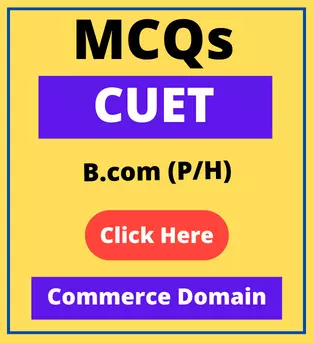NCERT Solutions for class 12 Business studies Chapter 6 Staffing
NCERT Solutions for class 12 Business studies Chapter 5 Staffing
Very Short Answer Type:
Q. 1 What is meant by recruitment? How is it different from
selection?
Ans.
Recruitment: The process of attracting, identifying, and encouraging candidates to apply for job vacancies.
Selection: The process of evaluating and choosing the most suitable candidate from those who applied.
Is there anything more specific you would like to know about these processes?
Q. 2. An organisation provides security services. It requires such candidates who are reliable and don’t leak out the secrets of their clients. What steps should be incorporated in selection process?
Ans.
- Conduct thorough background checks.
- Implement integrity tests.
- Perform psychometric assessments.
- Use detailed reference checks.
- Conduct in-depth interviews.
Q. 3. A company is manufacturing paper plates and bowls. It produces 1,00,000 plates and bowls each day. Due to local festival, it got an urgent order of extra 50,000 plates and bowls. Explain the method of recruitment that the company should adopt in the given circumstances to meet the order.
Ans.
Method of Recruitment: The company should adopt temporary or contract-based recruitment to quickly hire additional workers to meet the urgent order. This includes:
- Contacting staffing agencies.
- Advertising for temporary workers.
- Utilizing employee referrals.
- Conducting walk-in interviews.
Q. 4. Distinguish between training and development.
Ans.
Training: A short-term process aimed at improving specific skills and knowledge for a particular job.
Development: A long-term process focused on overall growth, enhancing future roles, and personal career advancement.
Hope this helps! Anything else you need?
Q. 5. Why are internal sources of recruitment considered to be
more economical?
Ans.
Internal Recruitment: It is more economical as it reduces advertising, onboarding, and training costs. It also shortens the hiring process and leverages existing employee familiarity with the company.
Q. 6. ‘ No organisation can be successful unless it fills and keeps the various positions filled with the right kind of people for the right job.’ Elucidate
Ans.
An organization’s success hinges on having the right people in the right roles. Properly filled positions ensure efficient operations, high productivity, and achieve organizational goals. It promotes employee satisfaction, retention, and overall growth.
Long Answer Type
Q. 1. ‘Human resource management includes many specialized activities and duties.’ Explain.
Ans.
Human Resource Management (HRM)
Introduction:
Human Resource Management (HRM) is crucial for the effective functioning of an organization.
Key Activities:
- Recruitment and Selection: Attracting and selecting the best candidates.
- Training and Development: Enhancing skills and career growth.
- Performance Management: Evaluating and improving performance.
- Compensation and Benefits: Managing employee rewards.
- Employee Relations: Ensuring positive workplace relationships.
- Compliance: Adhering to labor laws.
Conclusion:
These activities ensure an efficient, motivated workforce aligned with organizational goals, promoting overall success.
Q. 2. Explain the procedure for selection of employees.
Ans.
Selection Procedure of Employees
1. Preliminary Screening: Initial review of applications to shortlist candidates based on basic criteria.
2. Application Form: Candidates fill out detailed forms providing personal and professional information.
3. Written Tests: Assess candidates’ knowledge, skills, and aptitude related to the job.
4. Interviews: Conducted in various stages (e.g., HR, technical) to evaluate candidates’ suitability.
5. Reference Checks: Verification of candidates’ background and work history from previous employers or references.
6. Medical Examination: Ensuring candidates’ health and fitness for the job.
7. Final Selection: Candidates who pass all stages are given job offers.
8. Onboarding: New employees are introduced to the company’s policies, culture, and their roles.
This systematic process ensures the best candidates are selected, contributing to the organization’s success.
Q. 3. What are the advantages of training to the individual and to the organisation?
Ans.
Advantages of Training
1. To the Individual:
- Skill Enhancement: Improves job-specific skills and knowledge.
- Career Growth: Opens up opportunities for promotions and higher responsibilities.
- Job Satisfaction: Increases confidence and job satisfaction.
- Adaptability: Equips employees to handle new technologies and work processes.
2. To the Organisation:
- Improved Productivity: Better-trained employees perform tasks more efficiently.
- Quality Improvement: Enhances the quality of products and services.
- Employee Retention: Reduces turnover by promoting employee growth.
- Innovation: Encourages creativity and innovative problem-solving.
Training benefits both individuals by fostering personal and professional growth, and organizations by enhancing overall performance and competitiveness.
Q. 4. Kaul Consultants have launched www.naukaripao.com exclusively for senior management professionals. The portal lists out senior level jobs and ensures that the job is genuine through rigorous screening process.
a. State the source of recruitment highlighted in the case above.
b. State four benefits of the above identified source of recruitment.
Ans.
a. Source of Recruitment:
The source of recruitment highlighted is online recruitment through a specialized job portal.
b. Benefits of Online Recruitment:
- Wider Reach: Access to a large pool of candidates, including those passively seeking jobs.
- Cost-Effective: Reduces the cost associated with traditional recruitment methods.
- Efficiency: Streamlines the recruitment process with easy posting, searching, and application management.
- Quality of Applicants: Rigorous screening ensures that only genuine and qualified candidates are listed.
Q. 5. A company, Xylo limited, is setting up a new plant in India for manufacturing auto components. India is a highly competitive and cost effective production base in this sector. Many reputed car manufacturers source their auto components from here. Xylo limited is planning to capture about 40% of the market share in India and also export to the tune of at least ` 50 crores in about 2 years of its planned operations. To achieve these targets it requires a highly trained and motivated work force. You have been retained by the company to advise it in this matter. While giving answers keep in mind the sector the company is operating.
Questions:
a. Outline the process of staffing the company should follow.
b. Which sources of recruitment the company should rely upon. Give reasons for your recommendation.
c. Outline the process of selection the company should follow with reasons.
Ans.
a. Staffing Process:
- Manpower Planning: Assess workforce requirements based on production targets and market demands.
- Job Analysis: Define roles, responsibilities, and qualifications needed.
- Recruitment: Attract a pool of candidates through various sources.
- Selection: Evaluate and choose the best candidates using a thorough selection process.
- Training and Development: Provide necessary training to enhance skills.
- Performance Appraisal: Regularly evaluate employee performance.
- Compensation and Benefits: Develop competitive compensation packages to retain employees.
b. Sources of Recruitment:
- Online Job Portals: Wide reach and access to a diverse pool of candidates.
- Campus Recruitment: Tap into fresh talent from engineering and management institutes.
- Industry Networks: Utilize professional networks and associations to find experienced candidates.
- Employee Referrals: Leverage current employees’ networks for reliable candidates.
Reasons: These sources are cost-effective, ensure a high-quality talent pool, and offer quicker hiring solutions.
c. Selection Process:
- Preliminary Screening: Shortlist candidates based on resumes and applications.
- Written Tests: Assess technical knowledge, skills, and aptitude.
- Interviews: Conduct multiple rounds (HR, technical) to evaluate suitability.
- Reference Checks: Verify candidates’ backgrounds and work history.
- Medical Examination: Ensure candidates are fit for the job.
- Final Selection: Offer job to candidates who clear all stages.
Reasons: A comprehensive selection process ensures the right candidates are chosen, reducing turnover and increasing efficiency.
Q. 6. A major insurance company handled all recruiting, screening and training processes for data entry/customer service representatives. Their competitor was attracting most of the qualified, potential employees in their market. Recruiting was made even more difficult by the strong economy and the ‘jobseeker’s market.’ This resulted in the client having to choose from candidates who had the ‘soft’ skills needed for the job, but lacked the proper ‘hard’ skills and training.
Questions
a. As an HR manager what problems do you see in the company?
b. How do you think it can be resolved and what would be its impact on the company?
Ans.
a. Problems Identified:
- Talent Attraction: Competitors attracting most of the qualified candidates.
- Skill Mismatch: Candidates possess ‘soft’ skills but lack essential ‘hard’ skills.
- Economic Factors: Strong economy creating a challenging job market for recruitment.
b. Resolution and Impact:
Resolution:
- Enhanced Recruitment Strategies: Develop competitive recruitment strategies to attract top talent.
- Skill Development Programs: Implement training programs to build necessary ‘hard’ skills in employees.
- Competitive Compensation: Offer attractive compensation and benefits to retain and attract skilled employees.
- Partnership with Educational Institutions: Collaborate with institutions to create a pipeline of skilled candidates.
Impact:
- Improved Talent Acquisition: Attracts a higher number of qualified candidates.
- Skill Enhancement: Ensures employees have the required skills, improving productivity.
- Employee Retention: Increases retention rates through competitive compensation and development opportunities.
- Competitive Advantage: Positions the company as a preferred employer, enhancing its market competitiveness.
Would you like further details or assistance with another topic?
Q. 7. Ms. Jayshree recently completed her Post Graduate Diploma in Human Resource Management. A few months from now a large steel manufacturing company appointed her as its human resource manager. As of now, the company employs 800 persons and has an expansion plan in hand which may require another 200 persons for various types of additional requirements. Ms. Jayshree has been given complete charge of the company’s Human Resource Department.
Questions
a. Point out, what functions is she supposed to perform?
b. What problems do you foresee in her job?
c. What steps is she going to take to perform her job efficiently?
d. How significant is her role in the organisation?
Ans.
a. Functions of Ms. Jayshree:
- Recruitment and Selection: Hiring 200 additional employees to meet the expansion requirements.
- Training and Development: Ensuring new and existing employees are well-trained and skilled.
- Performance Management: Regular evaluation and improvement of employee performance.
- Employee Relations: Maintaining a positive workplace environment and resolving conflicts.
- Compensation and Benefits: Designing competitive compensation packages.
- Compliance: Ensuring adherence to labor laws and company policies.
b. Problems Foreseen:
- Talent Acquisition: Finding qualified candidates in a competitive market.
- Training Needs: Addressing varied training requirements for new and existing staff.
- Integration: Smooth onboarding and integration of new employees.
- Workload Management: Handling increased responsibilities and workload.
c. Steps to Perform Job Efficiently:
- Strategic Planning: Develop a detailed recruitment and training plan.
- Effective Recruitment Channels: Utilize multiple sources such as online job portals, employee referrals, and campus recruitment.
- Comprehensive Training Programs: Implement tailored training for skill enhancement.
- Employee Engagement: Foster a positive work culture to retain talent.
- Technology Utilization: Use HR software for efficient management and tracking.
d. Significance of Her Role:
Ms. Jayshree’s role is crucial as she ensures the organization has the right talent to achieve its goals. Her efforts in recruitment, training, and employee management directly impact the company’s productivity, growth, and competitive edge in the market.
List of Solutions of All Chapters


